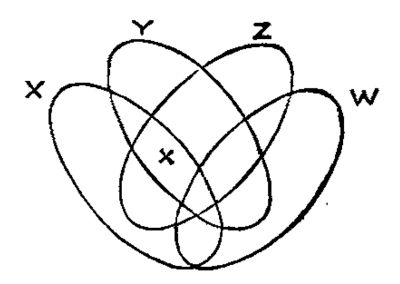Here’s a quote I think about often:
“It is faster to make a four-inch mirror and then a six-inch mirror than to make a six-inch mirror.” — Bill McKeenan, Thompson’s law of telescopes
If your goal is to make a six-inch mirror, why make a four-inch mirror first? From a reductionist perspective this makes no sense. But when you take into account how people learn, it makes perfect sense. The bigger project is more likely to succeed after you learn more about mirror-making in the context of a smaller project.
Awk
I was thrilled to discover the awk programming language in college. Munging files with little awk scripts was at least ten times easier than writing C programs.
When I told a friend about awk, he said “Have you seen Perl? It’ll do everything awk does and a lot more.”
If you want to learn Perl, I expect it would be faster to learn awk and then Perl than to learn Perl. I think I would have been intimidated by Perl if I’d tried to learn it first. But thinking of Perl as a more powerful awk made me more willing to try it. Awk make my life easier, and Perl had the potential to make it even easier. I’m not sure whether learning Perl was a good idea—that’s a discussion for another time—but I did.
C
I also learned C before learning C++. That was beneficial for similar reasons, starting with the four-inch mirror version of C++ before going on to the six-inch version.
Many people have said that learning C before C++ is a bad idea, that it teaches bad habits, and that it would be better to learn (modern) C++ from the beginning. That depends on what the realistic alternative is. Maybe if you attempted to learn C++ first you’d be intimidated and give up. As with giving up on learning Perl, giving up on learning C++ might be a good idea. At the time, however, learning C++ was a good move. Knowing C++ served me well when I left academia.
Learning on your own
Teaching yourself something requires different tactics than learning something in a classroom. The four-inch mirror warmup is more important when you’re learning on your own.
If I were teaching a course on C++, I would not teach C first. The added structure of a classroom makes it easier to learn C++ directly. The instructor can pace students through the material so as to avoid the intimidation they might face if they were attempting to learn C++ alone. Students don’t become overwhelmed and give up because they have the accountability of homework assignments etc. Of course some students will give up, but more would give up without the structure of a class.
Top-down vs bottom-up
From a strictly logical perspective, it’s most efficient to learn the most abstract version of a theorem first. But this is bad pedagogy. The people who are excited about the efficiency of compressing math this way, e.g. Bourbaki, learned what they know more concretely and incrementally, and think in hindsight that the process could be shortened.
It does save time to present things at some level of generality. However, the number of steps you can go up the abstraction ladder at a time varies by person. Some people might need to go one rung at a time, some could go two at a time or maybe three, but everyone has a limit. And you can take bigger steps when you have a teacher, or even better a tutor, to guide you and to rescue you if you try to take too big of a step.
You typically understand something better, and are more able to apply it, when you learn it bottom-up. People think they can specialize more easily than they can generalize, but the opposite is usually true. It’s easier to generalize from a few specific examples than to realize that a particular problem is an instance of a general pattern.
I’ve noticed this personally, and I’ve noticed it in other people. On Twitter, for example, I sometimes post a general and a concrete version of a theorem, and the more concrete version gets more engagement. The response to a general theorem may be “Ho hum. Everybody knows that.” but the response to a particular application may be “Wow, I never thought of that!” even when the latter is a trivial consequence of the former.
Related posts

